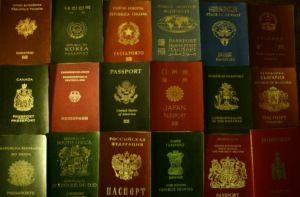News
The latest Henley Passport Index shows a new Iron Curtain forming
This article is more than 3 years old.
Denmark remains among the top performers, while Ukraine and Russia have taken great leaps in opposite directions

It will now be more difficult to enter the EU after the war on Ukraine (photo: Baigal Byamba)
Six weeks after the war in Ukraine started, Henley & Partners has released the results of its latest Passport Index.
The impact of the conflict on travel freedom and mobility has been more important than first imagined.
With millions of Ukrainians fleeing their home, Europe is witnessing its worst refugee crisis since World War II.
But where it became easier for Ukrainians to cross borders – thanks to the EU emergency plan that allows them to live and work in any of the 27 member states – it has become much more difficult for Russians.
Changing scores
With all the traveling restrictions and bans against Russia, the country’s passport has lost its value.
Today it ranks 49th with a score of 117. This means that someone with a Russian passport can enter 117 counties without needing a visa before traveling.
On the other hand, Ukraine’s current visa-free/visa-on-arrival score is 143 – a record high for the country which now ranks 34th on the index. That’s 26 places higher compared to 2012.
The gap between the two countries is likely to widen as the conflict continues.
“As the value of the Russian passport rapidly declines and the world opens its doors to Ukrainians, it is abundantly clear that the passport you hold determines your fate and dramatically impacts the opportunities you have,” said Dr Christian H Kaelin, the chairman of Henley & Partners.
“While it is impossible to predict what the world will look like in the shadow of a new Cold War, the latest index suggests that the divide between Russia and much of the Western world will only increase.”
The best passport to have
The top spots in the rankings are still held by Japan and Singapore. Both countries have a score of 192 when not considering temporary COVID-19 restrictions.
Germany and South Korea are second, with a score of 190. The top three is completed with Finland, Italy, Luxembourg, and Spain in with scores of 189.
The Danish passport is just behind in fourth place with a score of 188.










































